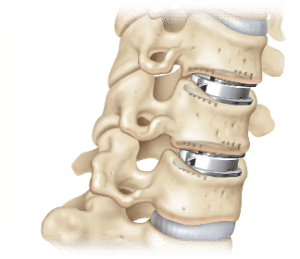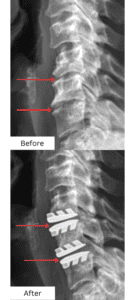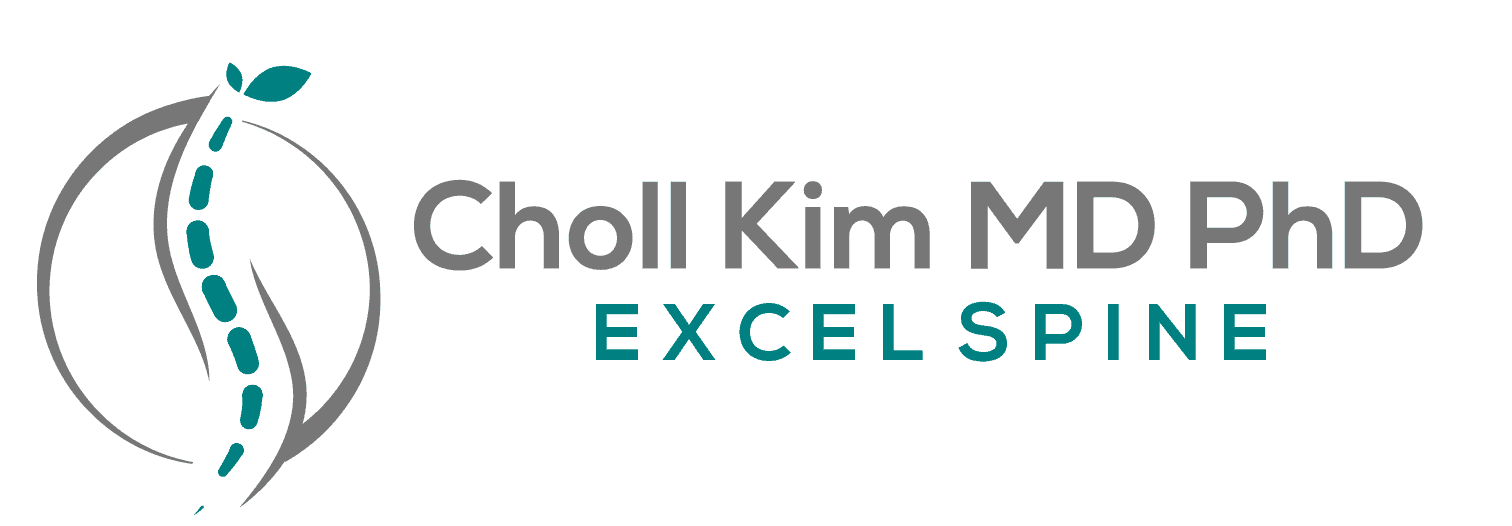What Is Cervical Disc Replacement?
Cervical disc replacement is a minimally invasive surgical procedure used to treat neck pain, nerve compression, or spinal cord pressure caused by a damaged cervical disc. Instead of fusing two vertebrae together, the surgeon removes the unhealthy disc and replaces it with an artificial disc implant that maintains natural motion in the neck.
The procedure is performed through a small incision at the front of the neck, and unlike traditional fusion surgery, it allows for continued flexibility and movement in the treated area. Surrounding muscles, arteries, and nerves are carefully preserved during the operation, promoting a smoother and faster recovery.
Why Is Cervical Disc Replacement Performed?
Cervical disc replacement is typically performed when a damaged or herniated disc in the neck is causing symptoms such as:
- Neck pain
- Radiating arm pain (radiculopathy)
- Numbness or tingling in the hands or fingers
- Muscle weakness
- Loss of coordination or fine motor skills
It is most often recommended for patients who have one or two levels of disc disease and who meet the criteria for motion-preserving surgery including having no evidence of instability or no motion on flexion/extension x-rays. The goal is to relieve nerve compression while preserving the spine’s natural movement.
How Do You Prepare for Cervical Disc Replacement?
To prepare for surgery, patients undergo a complete medical evaluation, including imaging studies such as MRI or CT scans. Preparation may also include:
- Discontinuing certain medications (like blood thinners) as directed
- Quitting smoking, which can slow the healing process
- Following specific pre-op instructions, such as fasting the night before surgery
- Arranging for transportation and help at home after the procedure
Your care team will provide detailed preoperative instructions and answer any questions you may have before the procedure.
What Can You Expect During Cervical Disc Replacement?
The procedure is performed with the patient under general anesthesia. A small incision is made at the front of the neck, and the surgeon gently moves aside muscles and tissues to reach the spine. The damaged disc is removed, relieving pressure on the spinal cord and nerves.
An artificial disc is then inserted in place of the removed disc. This implant is designed to preserve motion while also providing stability. Over time, the device will naturally bond with the vertebrae above and below.
Most procedures take about 1 to 2 hours, and many patients return home the same day or after a short overnight stay.


What Is the Recovery Like After Cervical Disc Replacement?
Eating
Begin with soft foods that are easy to swallow and drink plenty of fluids. As your throat heals and swallowing becomes easier, you can gradually reintroduce regular foods.
Showering and Incision Care
You may shower with the dressing for the first 3 days after surgery. After that, you can shower with the incision uncovered. Avoid soaking the area in water (bathtubs, hot tubs, pools) for at least 6 weeks to allow the incision to heal properly.
Returning to Work
- If you have a sedentary job, you can expect to return within 2–4 weeks.
- For physically demanding jobs, recovery may take 2–3 months. A phased return to work, starting with part-time duties, is recommended to help ease back into normal routines.
Physical Therapy
Physical therapy typically begins 3–4 weeks after surgery and focuses on strengthening the neck muscles to provide stability and support—essentially training your muscles to act as the best natural neck brace.
Activities and Exercise
Around 1–2 months after surgery, most patients can begin slowly reintroducing recreational activities and light sports, depending on comfort level and guidance from the care team.
What Are the Potential Risks of Cervical Disc Replacement?
While cervical disc replacement is considered safe and effective, like any surgery, it does carry some potential risks. These may include:
- Infection
- Bleeding or hematoma
- Difficulty swallowing (usually temporary)
- Hoarseness or vocal cord irritation
- Nerve or spinal cord injury
- Loosening or failure of the implant
- Continued or recurrent pain
Your surgeon will carefully review your risks based on your individual health and ensure all precautions are taken to minimize complications.
Are There Related Procedures to Cervical Disc Replacement?
Yes. If cervical disc replacement is not appropriate due to the severity of degeneration, multi-level disease, or other spinal issues, your surgeon may recommend:
- Anterior Cervical Discectomy and Fusion (ACDF) – a procedure where the damaged disc is removed and the vertebrae are fused together, eliminating motion at the level of surgery and is needed if instability is significant
- Posterior cervical procedures – sometimes used when nerve or cord compression occurs from the back of the spine
- Cervical laminoplasty or laminectomy – used for patients with multi-level stenosis or myelopathy
Your surgeon will discuss which approach is best based on your diagnosis, imaging, and personal goals.
Key Takeaways About Cervical Disc Replacement
- Cervical disc replacement is a minimally invasive surgery that relieves nerve pressure and maintains neck mobility.
- It is a motion-preserving alternative to traditional fusion surgery.
- Most patients go home the same day or after an overnight stay.
- Recovery is generally faster than fusion, with less muscle disruption and earlier return to activity.
- Physical therapy and activity modifications support long-term healing and stability.
- The procedure is safe, effective, and ideal for eligible patients seeking pain relief without sacrificing range of motion.
Next Steps
If you’re dealing with chronic neck pain, arm symptoms, or neurological issues related to a cervical disc problem, cervical disc replacement may be a highly effective treatment option. Schedule a consultation with a spine specialist to find out if you’re a candidate and to explore the best path forward for your spine health and quality of life.

